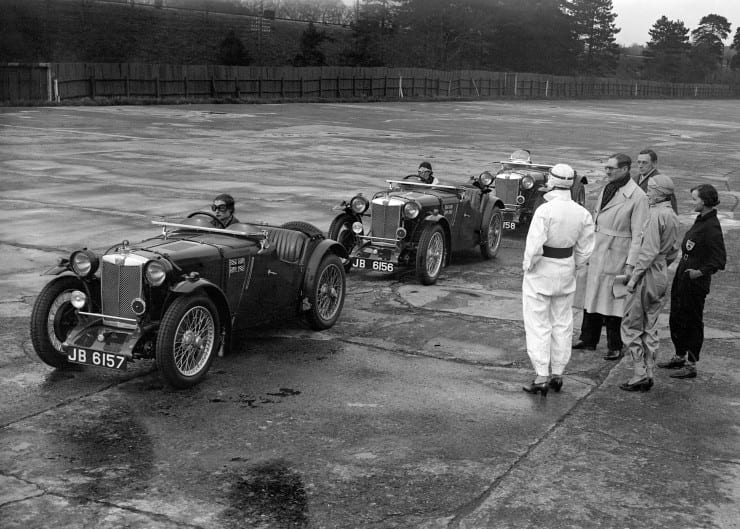MG’s Dancing Daughters

The 1939 Le Mans race car “Leonidis” that has a home at Revs Institute and its historic connection to the Collier family makes it fitting to recall the rather bold move by MG to enter three new 847cc PA cars in the 1935 running of the 24 Hours of Le Mans.
What better way was there for MG to put the brand front and center in the minds of the public than to have these cars driven by six accomplished women racers. And the Revs connection? C. Miles Collier (father of Revs Institute founder Miles C. Collier) attended that Le Mans race and later purchased one of those three MG PAs.

Captain George E.T. Eyston was chosen to head up MG’s 1935 all-women Le Mans team, which was initially called “George’s Young Ladies,” but was later made famous by the media as “Eyston’s Dancing Daughters.”
Eyston was a World War I hero and a very accomplished MG race driver. He had raced at Le Mans in 1928 and 1929 and also held a high-speed endurance record. Eyston later captured the 1937-1938 land speed record of 357.5 mph, which he wrested from Malcolm Campbell’s famous Blue Bird.

His job was to put together a successful team of six women racing three identical MGs. One journalist had named Eyston’s team the “Dancing Daughters” after the very popular MGM silent film of that name — the movie that first made Joan Crawford a Hollywood star – although other reports suggest the nickname was derived from a then-popular variety (vaudeville) act.
Either way, the Dancing Daughters had an impressive finish of 24th, 25th, and 26th in that 1935 Le Mans race, covering 1,576 miles in a field in which 29 cars did not finish. The only repair required during the entire race for all three MGs was a single tail light bulb.

In those days, the night section of the 24-hour race was particularly dangerous. One writer has described the headlights on these cars as being less powerful than the flashlight app on an IPhone. Facing challenges like that, these remarkable women proved themselves as serious racing talent, and they gave the MG PA the reputation of being so bulletproof that they could be driven all night…by women! Paired two-to a race car, the talented racers were Margaret Allen and Coleen Eaton, Doreen Evans and Barbara Skinner, and Joan Richmond and Joan Simpson.
Their efforts were laudable, but soon after the Dancing Daughters’ victorious return to England, MG’s William Morris (Lord Nuffield) closed the racing division, and labor strikes in France cancelled the 1936 Le Mans.

After the race, the MGs were upgraded to PB specification by boring out the engine to 939cc, which is why the car is now designated PA/PB. Chassis 1167 was then purchased by C. Miles Collier in 1935 and a Marshall supercharger was fitted per his request. The car served as his personal daily driver until it had a collision with a New York taxi. Collier then had the MG redesigned with the help of John Oliveau in 1937 and fitted with a new aerodynamic body. A year later Collier won the Automobile Racing Club of America’s “Round the Houses” race at Alexandria Bay, NY. In 1939, Collier returned to Le Mans, this time to race the MG, which was likely named after the Spartan warrior king Leonidas, with his friend and co-driver Lewis Welch. After a promising start in the French classic, a ruptured fuel tank seam forced the team to withdraw the car from competition in the 8th hour of the race.
Many very famous race drivers began their careers in MGs, and the brand was honored by the 2018 Amelia Island Concours as “practically the founding marque of American sports car racing.” Among the stellar MG racers of yore are the Collier brothers, Briggs Cunningham, Phil Hill, John Fitch, Ken Miles, Carroll Shelby and Richie Ginther. And, of course, the six Dancing Daughters.
Lead photo courtesy of the Brooklands Museum

